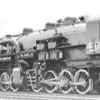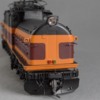SP AC-9 by Sunset.
Disassembly and re-painting.
This engine was painted by a previous owner so it was stripped, updates made and re-painted.
Unusual with a 'twin tower' power drive system to both sets of drivers. Motor is huge.
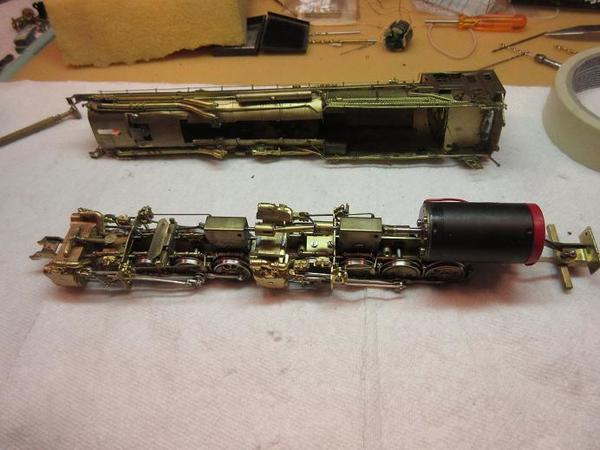
Not 'sound ready' so holes drilled in tender and cam added to one axle on back set of drivers.
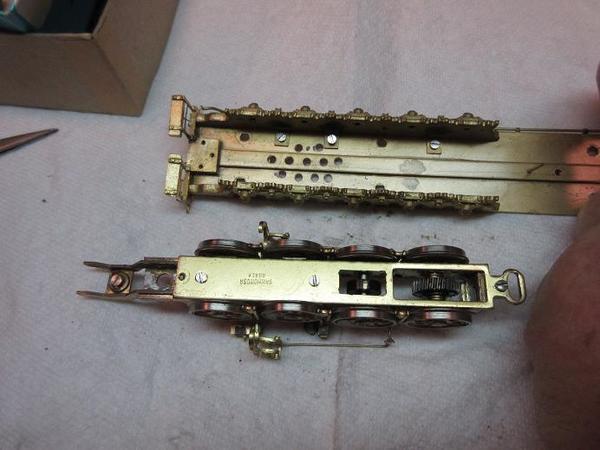
Stripped all the paint off. Used lacquer thinner and it brought off the paint in sheets so it must have been some other paint base. Since I had to used a stainless steel brush to get off a lot of the paint off the boiler, I'm guessing it must of been a water base paint as neither enamel reducer nor acetone would dissolve the old paint. I even used my ultrasonic cleaner with no luck (you can see how it made the boiler lighter than the other parts). Interesting in what the builders use to preserve the brass as none of the 'cleaners' removed the base coat (I always assumed they used a lacquer base). After I used the stainless brush, I was concerned that I might have scratched the brass but I 'lucked out': next time, I'll use a brass brush.
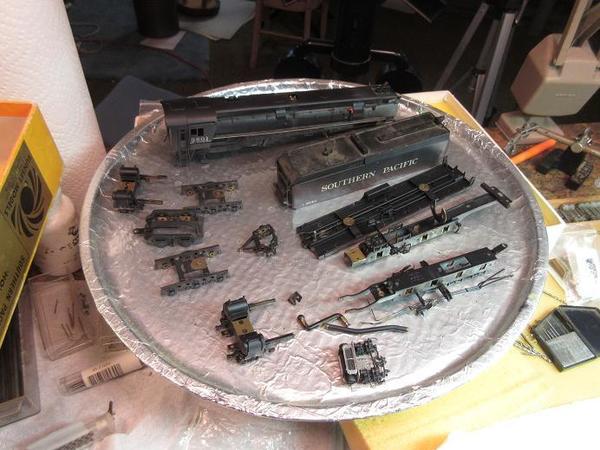
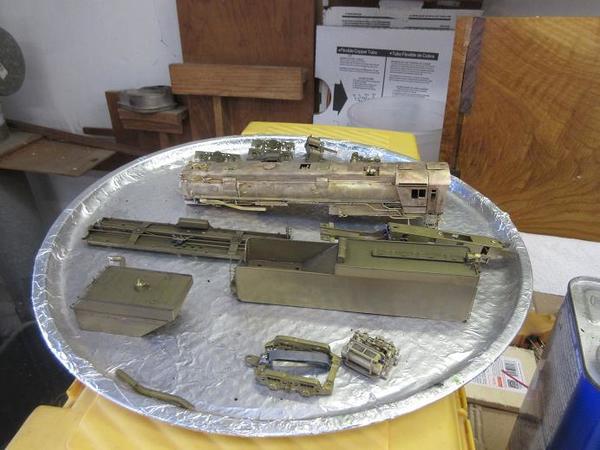
'you get what you paid for'!
There were a lot of things to fix but at half price and an 'afternoon', it was worth it.
1. One end of tender base (end bumper) was loose: resistant soldering needed.
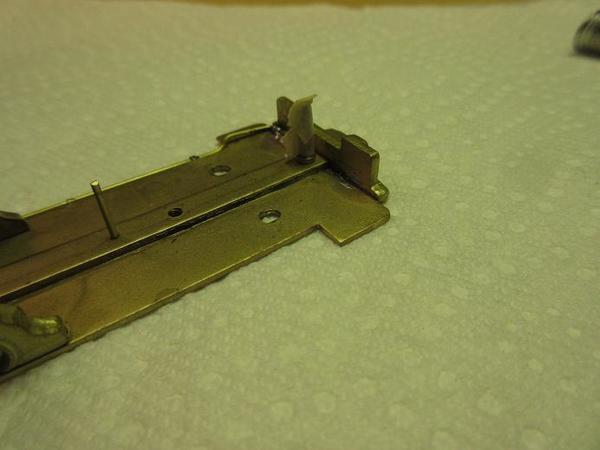
2. Whistle needed soldering : same picture has new drilled out marker lights.
I had to replace them with cal scale. Able to remove old bracket from hole and solder new marker lights in their place. Drilled a hole below them on the boiler for the wire access.
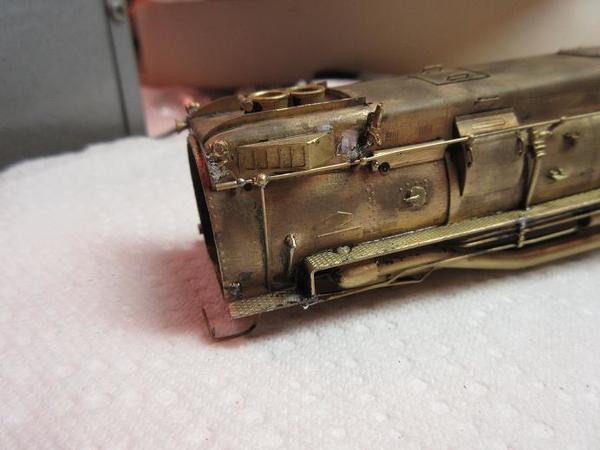
3. One of the steam pipes going to the back piston cylinders had a broken solder joint. Used the back cylinder heads to align all the pipes before resistance soldering it.
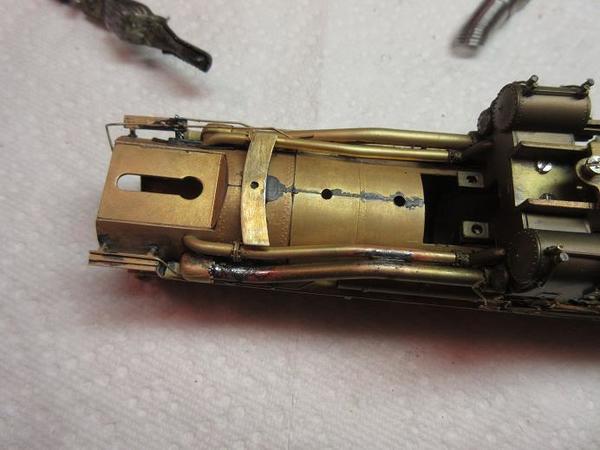
4. Tender missing part of plate used to screw base to top.
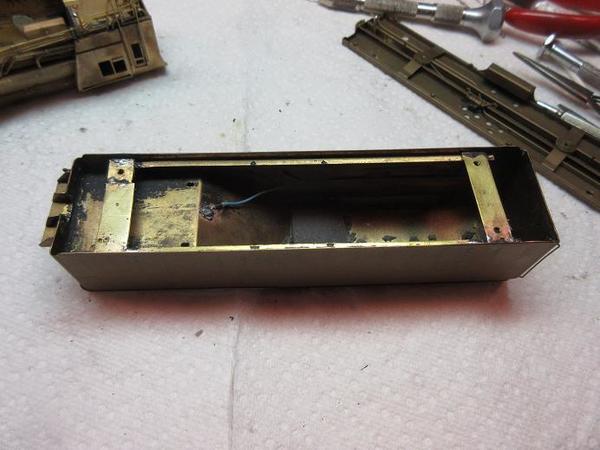
5. Piping on both sides needed soldering. Soldering iron fixed this.
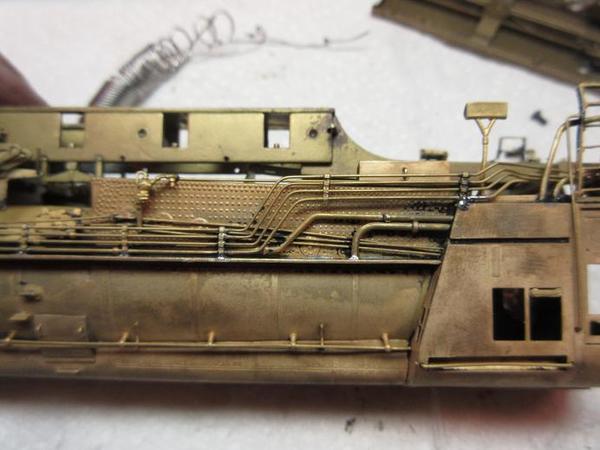

6. One mounting stud broken off that holds the back of the rear drivers to the boiler: resistance soldered.

7. Front drivers a little too wide. Used wheel puller and NMRA gauge to correct it.

Trimmed Tomar caboose marker lights added to rear of tender.
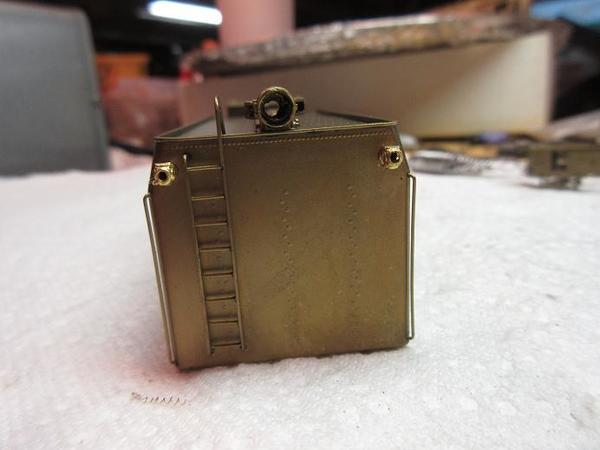
Two coats of scalecoat # 10 added:






